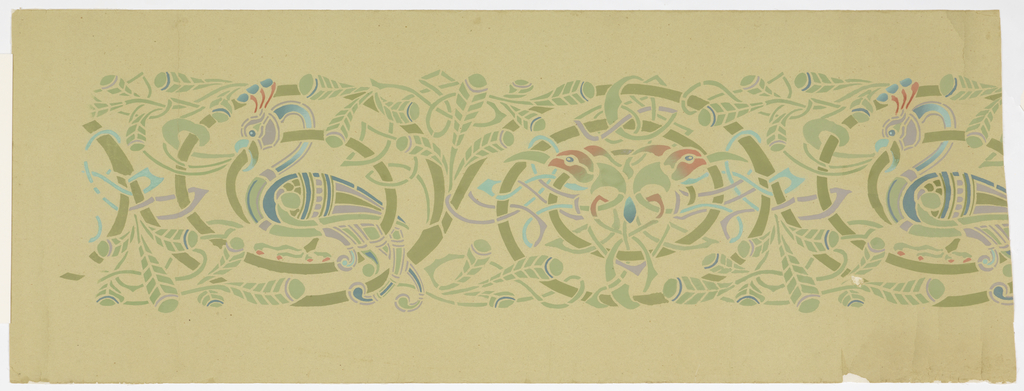After viewing this wallpaper frieze in the collection numerous times and always being enamored by its simplicity and charm, I finally took the initiative to do some research to see what it actually was. Stylized birds and peacock feathers are intertwined with a scrolling rinceau pattern, creating a delightful frieze pattern. The design is rendered in a very flat manner with no hint at shading to suggest depth.While the design is quite intricate it is not overly complicated. The use of stenciling in certain areas creates a more artistic look, making the print appear more like a watercolor. Stenciling on wallpaper is rare as it is a hand process that slows down the production time and increases the cost.
All these design decisions made sense when I discovered this frieze was designed in 1900 for the Children’s Room at the Smithsonian Institution in Washington, D.C. Samuel Pierpont Langley, third Secretary of the Smithsonian Institution, wanted the Museum to be an enriching learning environment for children as well as adults, so he converted a room on the first floor of the Smithsonian Institution Building’s south tower into a natural history gallery specifically for children. He believed children were more likely to learn in a comfortable environment and proposed that the Children’s Room be designed around their needs and interests. The room served this purpose, with the frieze intact, from 1901 until 1939. But the good news is that the original decorative scheme by Grace Lincoln Temple was restored in 1987.
Grace Lincoln Temple was a native of Boston where she studied at the Art Museum School. She moved to Washington, D.C. in the 1890s. She continued teaching art classes and began doing interior decoration, becoming the first woman to work as a decorator of public buildings. She helped First lady Frances Cleveland with some decorating in the East Room of the White House, decorated the United States Government Building at the Louisiana Purchase Exposition (St. Louis World’s Fair, 1904), and supervised decoration for the Smithsonian Institution rotunda.

One thought on “Creating a Beautiful Learning Environment for Children”
Ann Rich on February 5, 2021 at 1:57 pm
Nice!